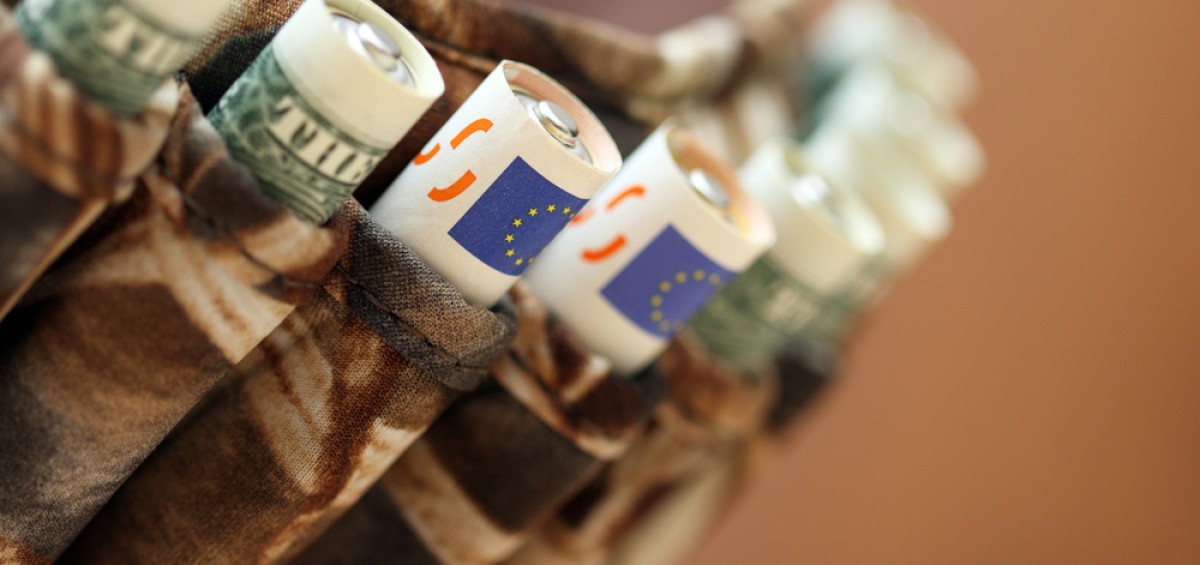It was my good fortune to receive an advance copy of Jim Rickards’ new book, “Currency Wars”. It is a great book, and I highly recommend it.
The book is split into three parts, with the first part being almost surreal because it reads more like a novel than non-fiction. It details Rickards’ participation in an exercise at the Warfare Analysis Laboratory near Washington D.C. This group is one of the Defense Department’s leading venues for war games and strategic planning, but in a first-ever event, the game in which Rickards joined was not a war-fighting simulation. Rather, several dozen people from the military, academic and intelligence communities fought a global financial war using currencies and capital markets to support national interests. Rickards and two colleagues were invited to give the simulation some real-world, Wall Street expertise about markets, which they certainly did.
I guarantee that when you start reading this part, you won’t put the book down until you learn the outcome of the war. It reads better than a suspense novel, even though the ending is somewhat anti-climactic and predictable. While I won’t spoil it for you by divulging the ending, I will note that gold has a big role to play. In fact, gold reappears throughout the whole book.
In the second section, Rickards analyzes the first two currency wars (CWI and CWII). He provides an interesting historical account of the global monetary twists and turns, ups and downs that marked much of the twentieth century, with keen insight into the motivations why these currency wars were fought. CWI lasted from 1921 to 1936. Even though CWII came much later – from 1967 to 1987 – both wars were fought by competing national interests, which brought into the battle competitive devaluations and other interventionist actions of government. It is noteworthy that currency wars are a product of the post-Classical Gold Standard period that began in the aftermath of World War I, when the monetary role of government began to morph, as gold was driven out of day-to-day circulation, and then expand in new ways never before seen.
The final section of the book explains why the world is now fighting Currency War III, which Rickards believes began in 2010. He speculates that there are three possible outcomes from CWIII – paper, gold or chaos. Each of these alternatives is analyzed in detail, providing readers with much food for thought.
It has been said that book reviews are supposed to include something critical. Nevertheless, I have nothing negative to say about “Currency Wars”. It is a great book, and you will not be disappointed with it. But I do have one important thought to keep in mind as you read it.
US real income and living standards peaked in early-1973, less than two years after President Nixon closed the gold window. As their closeness in time suggests, these two events are interconnected. The world’s financial system experienced a profound change from the edicts of Mr. Nixon’s pen, with the consequence that private enterprise was negatively impacted.
The harmful effects from abandoning gold still impair economic activity today because the necessary discipline has been removed from the monetary system, creating the global imbalances, debt loads, insolvent banks, risky derivatives and other problems that plague our world. So as economic activity sinks ever deeper into an abyss, think about the cause. Namely, governments have created this mess, so we cannot rationally expect governments to get us out of it, which is something I have intuitively understood for some time but was also the main conclusion I reached from Rickards’ book. Whether Rickards intended readers to reach that viewpoint, I am not sure. Nevertheless, it is clear to me, the answers and the direction we need so urgently now to avoid falling further into the abyss will not come from government, but rather from private enterprise and hard work, the source of all solutions, and indeed all wealth.
My point is that money should not be a weapon used to fight perceived national interests. We have learned from the last century that currency wars can lead to shooting wars. The Warfare Analysis Laboratory hopefully recognizes that reality. So the role of providing currency should instead be returned to where it rightfully belongs – with private enterprise. The logic for doing so is simple and straightforward.
Aside from the fact that war is a product of government and not private enterprise, governments do not have bottom-line accountability. In contrast, if companies do not deliver a product or service that people want, they go out of business. Governments, however, do not close up shop and disappear, even when the outcome they create is horrific. So in my view, the sooner this incontestable tenet is recognized, the sooner we will reach the end of CWIII, and thereby avoid another global shooting war.








 My objective is to share with you my views on gold, which in recent decades has become one of the world’s most misunderstood asset classes. This low level of knowledge about gold creates a wonderful opportunity and competitive edge to everyone who truly understands gold and money.
My objective is to share with you my views on gold, which in recent decades has become one of the world’s most misunderstood asset classes. This low level of knowledge about gold creates a wonderful opportunity and competitive edge to everyone who truly understands gold and money.
